Michael J. Behe's Blog, page 537
January 20, 2019
Eugene Wigner’s treasonous claim: God and mathematics are related
 pi in mosaic, Berlin/Holger Motzkau
pi in mosaic, Berlin/Holger MotzkauEugene Wigner (1902–1995) won the Nobel Prize in physics in 1963 but he was more famous for something else, an essay published in 1960 called The Unreasonable Effectiveness of Mathematics in the Natural Sciences where he said things like:
It is difficult to avoid the impression that a miracle confronts us here, quite comparable in its striking nature to the miracle that the human mind can string a thousand arguments together without getting itself into contradictions, or to the two miracles of the existence of laws of nature and of the human mind’s capacity to divine them…
The miracle of the appropriateness of the language of mathematics for the formulation of the laws of physics is a wonderful gift which we neither understand nor deserve. We should be grateful for it and hope that it will remain valid in future research and that it will extend, for better or for worse, to our pleasure, even though perhaps also to our bafflement, to wide branches of learning…
“The miracle of the appropriateness of the language of mathematics to the formulation of the laws of physics is a wonderful gift which we neither understand nor deserve.
Whoa! What happened to the pre-human of evolutionary psychology, who spread his selfish genes by knowing arithmetic the way a hog knows truffles?
Wigner’s essay was viewed as a sort of “treason” against science, meaning that his thinking did not lead in a naturalist (nature is all there is) direction. Naturalism is often called “materialism.”
We are reminded of the story in a review of astrophysicist Mario Livio’s 2009 book, Is God a Mathematician?, which attempted to counter Eugene Wigner’s insight:
In his 1960 article, “The Unreasonable Effectiveness of Mathematics in the Natural Sciences” Wigner stated the truth which every atheist scientist and philosopher knew and was afraid to tackle: Mathematics and physics, originating from two completely different quarters, the former from the pure speculations of the mind, the latter from the empirical data the physical reality feeds our experience with, have no reason to be connected in any comprehensible or predictable way. And yet, mathematics has been wonderfully effective in describing physical laws and predicting outcomes of experiments in the real world. Why, asked Wigner, and couldn’t find an answer. No one can. Scientists keep using math and relying on math, as if they know for sure that math must be relevant to our physical experience. But they can’t explain why. The arrogant claim that science will explain the world more and more came to an end; science can’t even explain itself anymore.
Wigner added insult to injury when he ended his article using almost religious language of humbleness, gratitude and faith …
In short, Wigner committed a treason against science. He didn’t, in an Einsteinian fashion, just declare a personal faith in a God that had only marginal relevance to his scientific studies. He went farther than that: he implied that science was impossible and inexplicable without accepting a higher reality, transcending the mind of man and its capabilities for reasoning and experimentation. The short and ostensibly innocent article faced some really violent reactions; some objected to the conclusions in it, others to the premises, and still others refused to even deal with it, pretending it had never been written. But Wigner remained right about one thing: Despite the many attempts, no one could give a rational explanation for what Wigner described as the “uncanny ability of mathematics to describe and predict accurately the physical world.” Bojidar Marinov, “Mario Livio, or the Poverty of Atheist Philosophy: A Review of “Is God a Mathematician?”” at American Vision
(2011)
Of course, people who know that there is no such thing as truth in our multiverse are somehow wiser now than Wigner…
See also: Neil deGrasse Tyson’s Cosmos and “the artistic license to lie” One thing readers may not know is that, in a series that leaned heavily on the supposed conflict between religion and science, obvious and widely noted misrepresentations were excused in the service of a “greater truth”
Hat tip: Philip Cunningham
Follow UD News at Twitter!
Copyright © 2019 Uncommon Descent . This Feed is for personal non-commercial use only. If you are not reading this material in your news aggregator, the site you are looking at is guilty of copyright infringement UNLESS EXPLICIT PERMISSION OTHERWISE HAS BEEN GIVEN. Please contact legal@uncommondescent.com so we can take legal action immediately.
Plugin by Taragana
Neil deGrasse Tyson’s Cosmos and “the artistic license to lie”
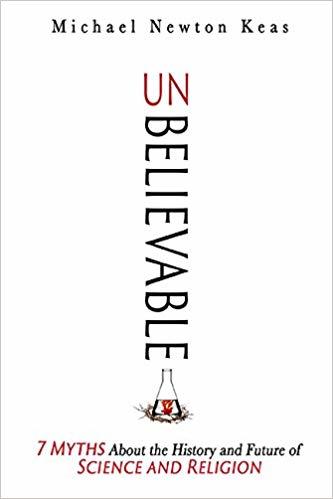 In his new book, Unbelievable, 7 Myths About the History and Future of Science and Religion, science historian Michael Keas provides a lot of useful information about the anti-Christian bias of Carl Sagan’s 1980 Cosmos and the 2014 remake featuring Neil deGrasse Tyson, (a projected 2019 update is coming this spring).
In his new book, Unbelievable, 7 Myths About the History and Future of Science and Religion, science historian Michael Keas provides a lot of useful information about the anti-Christian bias of Carl Sagan’s 1980 Cosmos and the 2014 remake featuring Neil deGrasse Tyson, (a projected 2019 update is coming this spring).
One thing readers may not know is that, in a series that leaned heavily on the supposed conflict between religion and science, obvious and widely noted misrepresentations were excused in the service of a “greater truth”:
At least one historian of science thinks that, for the sake of a greater good, it might be permissible for Cosmos 2014 to broadcast false history of science. Joseph D. Martin, historian and philosopher of science and technology at the University of Cambridge, wrote that he agreed with many of the criticisms of Cosmos’s representations of history, but he added, “ Cosmos is a fantastic artifact of scientific myth-making and as such provides a superb teaching tool when paired with more responsible historical presentations.” …
Martin continued: “If we [grant] Cosmos the artistic license to lie, the question is then whether it [is] doing so in service of a greater truth and if so, what is it? And what does it mean for us if it turns out that Cosmos and the history community are simply going after different truths? For the record, I myself am still very much on the fence about this issue, but if I were tasked with mounting a defence of Cosmos as it stands, one of the things I’d say is that the stakes of scientific authority are very high right now, especially in the United States. Perhaps the greater truth here is that we do need to promote greater public trust in science if we are going to tackle some of the frankly quite terrifying challenges ahead and maybe a touch of taradiddle in that direction isn’t the worst thing.” (pp. 152–53) Also: Joseph D. Martin, “We Need to Talk About Cosmos,” H-Physical Sciences, May 14, 16, 2014
“Artistic license to lie”? “Different truths”?
If you are not familiar with the term “taradiddle,” it has come to mean a blatant lie whose significance the speaker hopes to minimize, in order to keep control of — as the New York Times would put it — the Narrative.
Keep all this in mind next time you hear about a tax-funded study of supposed reasons why the public doesn’t trust science.
See also: You have to know the cosmos remake is in trouble (conceptually) when physicist Chad Orzel is saying stuff like this at ScienceBlogs (2014)
Larry Krauss? Francisco Ayala? And Now Neil DeGrasse Tyson? It will be interesting to see whether the #MeToo movement takes off any of the shine of the 2019 continuation (2018). It could be waning in significance.
Carl Sagan had some extraordinary religious commitments which helped shape his thought: Science and miracles: The Carl Sagan edition (2018) Also: Learning dolphin languageto talk to ET (2013)
and
A study of the causes of science skepticism sails right by the most obvious cause of skepticism: Repeated untrustworthiness
Copyright © 2019 Uncommon Descent . This Feed is for personal non-commercial use only. If you are not reading this material in your news aggregator, the site you are looking at is guilty of copyright infringement UNLESS EXPLICIT PERMISSION OTHERWISE HAS BEEN GIVEN. Please contact legal@uncommondescent.com so we can take legal action immediately.
Plugin by Taragana
January 19, 2019
Jonathan McLatchie interviews Finnish scientist Matti Leisola
Jonathan McLatchie In this webinar, biologist Dr. Matti Leisola talks about his journey as a scientist from Darwin to design.
See also: Jonathan McLatchie And Gunter Bechly On Conflicting Evidence Re Common Ancestry
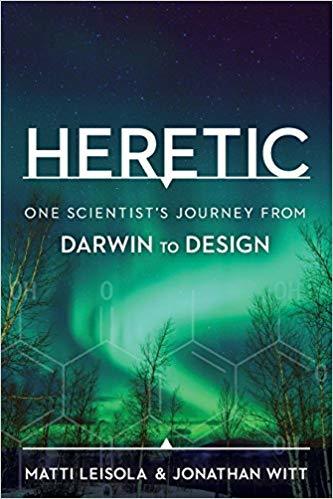
Matti Leisola: Another gifted scientist poised over the memory hole?
and
Matti Leisola On Evolution And The Recent Nobel Chemistry Prize
Follow UD News at Twitter!
Hat tip: Philip Cunningham
Copyright © 2019 Uncommon Descent . This Feed is for personal non-commercial use only. If you are not reading this material in your news aggregator, the site you are looking at is guilty of copyright infringement UNLESS EXPLICIT PERMISSION OTHERWISE HAS BEEN GIVEN. Please contact legal@uncommondescent.com so we can take legal action immediately.Plugin by Taragana
Honey bees’ unusual defence: Shimmering
It’s now thought that honey bees “shimmer” in order to protect themselves from hornets:
What this essentially does it make is extremely difficult for hornets to swoop in and land on their massive huddle to prey on individual bees. Kastberger and his colleagues noted in their research that shimmering can create what they described as a “shelter zone” of over a foot and a half of space between the bees and hornets or wasps. Catie Keck, “Honey Bees’ Oddly Hypnotizing ‘Shimmering’ Is Actually a Clever Defense” at Gizmodo
Shimmering beats defending themselves by stinging because the bee that stings dies. Odd that bees could teach themselves this alternative purely by accident…
See also: J. Scott Turner and the giant crawling brain
and
Researchers: Termites protect their ecosystem against drought
Follow UD News at Twitter!
Copyright © 2019 Uncommon Descent . This Feed is for personal non-commercial use only. If you are not reading this material in your news aggregator, the site you are looking at is guilty of copyright infringement UNLESS EXPLICIT PERMISSION OTHERWISE HAS BEEN GIVEN. Please contact legal@uncommondescent.com so we can take legal action immediately.
Plugin by Taragana
2019 January 18th — March for life — # 46
Yesterday, here’s a vid report:
UD’s man on the spot has pictures, so let undeniable truth speak to us:
 A child of rape speaks
A child of rape speaks Another mom and daughter speak
Another mom and daughter speak A child in the womb spoke . . .
A child in the womb spoke . . .  We all may speak
We all may speak Let us all speak . . .
Let us all speak . . .
Copyright © 2019 Uncommon Descent . This Feed is for personal non-commercial use only. If you are not reading this material in your news aggregator, the site you are looking at is guilty of copyright infringement UNLESS EXPLICIT PERMISSION OTHERWISE HAS BEEN GIVEN. Please contact legal@uncommondescent.com so we can take legal action immediately.
Plugin by Taragana
Respectable people who doubt Darwin – a long list
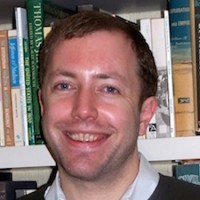
In a response to a putdown of intelligent design at National Review, David Klinghoffer offered examples of people National Review readers would take seriously who, one way and another, did not feel they owed the allegiance to Darwin that a clever but clueless trend follower might:
I am surprised that he doesn’t seem to know that many of the great figures of the conservative intellectual past, including Buckley, tended toward skepticism on Darwinism or sympathy for design — in no particular order, Richard John Neuhaus, Irving Kristol and Gertrude Himmelfarb, Tom Wolfe, Richard Weaver. In Witness, Whittaker Chambers beautifully described awaking from the spell of Communism upon contemplating the “immense design” of his little daughter’s ear. Buckley hosted a Firing Line debate on intelligent design, which he argued for alongside his fellow debaters, mathematician David Berlinski, biochemist Michael Behe, and U.C. Berkeley law professor Phillip Johnson, all affiliated with Discovery Institute. Commentary published Berlinski’s great series of attacks on Darwinian orthodoxy. And so on. David Klinghoffer, “The Ultimate Question of Life’s Origins” at National Review
One thinks of John Lennon and Ben Stein as well (you can decide if you think they are respectable or not).
Meanwhile, a historian and compulsive listmaker sends us this list of generally reputable people who have doubted Darwinism:
St. George Jackson Mivart–the book to read is On the Genesis of Species (1871)
Alfred Russel Wallace–the book to read is The World of Life: A Manifestation of Creative Power, Directive Mind and Ultimate Purpose (1910)
Oliver Lodge–the book to read is Evolution and Creation (1926)Robert Broon–the book to read is The Coming of Man: Was It Accident or Design? (1933)John Elof Boodin–the book to read is God and Creation: Three Interpretations of the Universe (1934)Jacques Barzun–the book to read is Darwin, Marx, Wagner: Critique of a Heritage (1941, 2nd ed. 1958)
Paul S. Morehead and Martin M. Kaplan (editors)–the book to read is Mathematical Challenges to the Neo-Darwinian Interpretation of Evolution (proceedings of The Wistar Symposium, April 25-26, 1966) (1967)Arthur Koestler and J. R. Smythies (editors)–the book to read is Beyond Reductionism: New Perspectives in the Life Sciences (proceedings of The Alpbach Symposium 1968) (1969)William Irwin Thompson–the book to read is At the Edge of History (1971)
Norman Macbeth–the book to read is Darwin Retried (1974)
Fred Hoyle–the book to read is The Intelligent Universe (1984)
R. J. Baum–the book to read is Doctors of Modernity: Darwin, Marx & Freud (1988)
Owen Barfield–the book to read is Saving the Appearances: A Study in Idolatry (1957, 2nd. ed. 1988)
Stanley L. Jaki–the book to read is The Savior of Science (1988)
David Stove–the book to read is Darwinian Fairytales: Selfish Genes, Errors of Heredity, and Other Fables of Evolution (1995)Anthony O’Hear–the book to read is Beyond Evolution: Human Nature and the Limits of Evolutionary Explanation (1997)Wendell Berry–the book to read is Life is a Miracle: An Essay Against Modern Superstition (2000)Hilary and Steven Rose (editors)–the book to read is Alas, Poor Darwin: Arguments Against Evolutionary Psychology (2000)Benjamin Wiker–the book to read is The Darwin Myth: The Life and Lies of Charles Darwin (2009) Paul Johnson–the book to read is Darwin: Portrait of a Genius (“genius” meant in an ironic sense!) (2012)Thomas Nagel–the book to read is Mind & Cosmos: Why the Materialist Neo-Darwinian Conception of Nature is Almost Certainly False (2012)

There was also the public evolution summit in November 2016 but that deserves a story by itself as one senses that the cultural origins are quite different.
See also: Why did an evolutionary biology prof imply world-famous chemist James Tour was “stupid”?
A writer encountered this all-too-common type of behavior recently and was, well, surprised. To see why it feels normal to many of us, it is helpful to understand a bit about Darwinism as a social phenomenon.
Intelligent design as “rube-bait” and David Klinghoffer’s response Klinghoffer offers his vid, The Information Enigma by way of rebuttal. But rebuttal almost misses the point. Today’s Darwinism is a snipe on Twitter, a swipe in passing, a slogan on a whiteboard, a well-practiced rant – not something it would make sense to ask anyone to support with reference to facts or coherent ideas. Williamson’s got that right. No arguing with fashion.
George Montañez: Using specified complexity to rule out Darwinian explanations A lay-friendly version of Montanez’s paper at BIO-Complexity translates from the math.
How Darwinism misled biologists about lichens They spent a lot of time ridiculing what they should have been studying. They ridiculed the now commonly accepted idea that a lichen was algae and fungi living as if they were one organism
Follow UD News at Twitter!
Copyright © 2019 Uncommon Descent . This Feed is for personal non-commercial use only. If you are not reading this material in your news aggregator, the site you are looking at is guilty of copyright infringement UNLESS EXPLICIT PERMISSION OTHERWISE HAS BEEN GIVEN. Please contact legal@uncommondescent.com so we can take legal action immediately.
Plugin by Taragana
Hermit crabs have odd ways of preventing theft and finding new homes…
 large red hermit crab with shell/H. Zell
large red hermit crab with shell/H. Zell (CC BY-SA 3.0)
The hermit crabs learned to move into the shells of dead crustaceans, and their well-being depends on that movable property. Recent research suggests that they have made some unusual efforts, as species, to hang onto the desirable shells:
Over the course of evolution, penis size has been subject to female choice and competition with male rivals. In a study published today (January 16) in Royal Society Open Science, Mark Laidre, a biologist at Dartmouth College, introduces a new idea: that larger penises help animals keep hold of precious resources. He compared hundreds of specimens of nine related species of hermit crab and showed that crustaceans that have more valuable shells have longer sexual tubes, helping them keep a grip on their homes while they extend their reproductive organs toward a mate. “It is a relatively novel way of thinking about the evolution of penis size,” says Morgan Kelly, a biologist at Louisiana State University who was not involved in the work. Abby Olena, “Larger Hermit Crab Penises May Prevent Shell Theft” at The Scientist
Hernit crabs do put a lot into their mobile homes:
These animals can whittle their shells and secrete erosive chemicals, allowing them to create a smooth and expansive interior. These refurbished homes give them space to grow and may even provide room for egg storage—making the shells extremely valuable. They are, in other words, not something that you’d like to leave—even temporarily—which many hermit crabs have to do to mate. But what if you could have a large enough sexual organ to reproduce without exiting your shell, which rivals may steal? Jake Buehlere, “Male hermit crabs evolved larger sex organs to avoid losing homes” at National Geographic
Finding new homes?
See also: Researchers: Some Life Forms Don’t Grow Old Or Lose Fertility, Challenging An Assumption About Evolution (they live longer too)
Follow UD News at Twitter!
Copyright © 2019 Uncommon Descent . This Feed is for personal non-commercial use only. If you are not reading this material in your news aggregator, the site you are looking at is guilty of copyright infringement UNLESS EXPLICIT PERMISSION OTHERWISE HAS BEEN GIVEN. Please contact legal@uncommondescent.com so we can take legal action immediately.
Plugin by Taragana
Winston Ewert: Will the Free Market Help or Hurt Us in an AI-Empowered World?
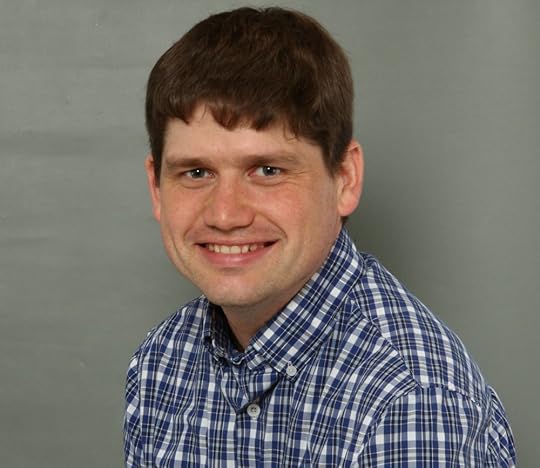 He argues that we may need new institutions, such as insurance against job obsolescence:
He argues that we may need new institutions, such as insurance against job obsolescence:
I believe that humans are creative enough to come with the new institutions necessary to adapt to a changing world. What I fear is that we will not be allowed to do so. We do not live in an ideal free market, where we can choose whether or not to belong to any particular institution. Instead, we live in a mixed society where we are free to choose whether to belong to some institutions but other institutions are either mandated or forbidden. We are not always free to experiment with new institutions to identify the best ways to organize society.
If humans are free to experiment with new institutions, I believe we will find an excellent solution. However, there is a great danger that those who benefit from the status quo will use their influence to prevent the adoption of new institutions. Further, others will attempt to force institutions they think best on other people, leading to great suffering. The great danger we face is the danger of not being free enough to adapt to new and changing circumstances. More.
See also: Do technologies change cultures or were the changes inevitable anyway?
and
Winston Ewert’s dependency graph model of the relationship of life forms
Follow UD News at Twitter!
Copyright © 2019 Uncommon Descent . This Feed is for personal non-commercial use only. If you are not reading this material in your news aggregator, the site you are looking at is guilty of copyright infringement UNLESS EXPLICIT PERMISSION OTHERWISE HAS BEEN GIVEN. Please contact legal@uncommondescent.com so we can take legal action immediately.
Plugin by Taragana
January 18, 2019
George Montañez: Using specified complexity to rule out Darwinian explanations
A lay-friendly version of Montañez’s paper at BIO-Complexity translates from the math:
The paper gives a detailed mathematical theory of what specified complexity is, what it does and how it can be used to rule out proposed explanations. It defines a common and rigorous foundation for all specified complexity models. It demonstrates that specified complexity must be rare, and it shows how to create new specified complexity models for domains of interest (such as converting irreducible complexity into a quantitative form of specified complexity, as shown in the paper).
Given the explicit connection made between specified complexity and statistical hypothesis tests (by way of p-values), we can reverse the relationship to provide a minimum probabilistic baseline that any proposed explanation must exceed to be considered a plausible explanation, setting an objective quantitative bar (relative to a simple uniform distribution) by which we can measure the causal adequacy of any naturalistic explanation. As Dr. Montañez notes in the paper, meeting this requirement “is the entry fee for a probabilistic mechanism even to enter the tournament of competing explanations.” “BIO-Complexity Article Offers an Objective Method for Weighing Darwinian Explanations” at Evolution News and Science Today
See also: A new unified model of specified complexity
Follow UD News at Twitter!
Copyright © 2019 Uncommon Descent . This Feed is for personal non-commercial use only. If you are not reading this material in your news aggregator, the site you are looking at is guilty of copyright infringement UNLESS EXPLICIT PERMISSION OTHERWISE HAS BEEN GIVEN. Please contact legal@uncommondescent.com so we can take legal action immediately.
Plugin by Taragana
Noncoding (that is, “junk”) DNA helps cells avoid starvation
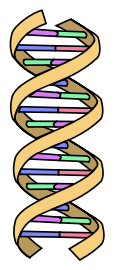
Some researchers wondered whether all that junk DNA supposedly left over from Darwinian evolution actually did something after all so they tested the idea:
Patches of seemingly meaningless DNA dotted throughout the genome might actually have a function: helping cells to survive starvation. Two studies published in Nature on 16 January suggest that these stretches of non-coding DNA called introns help to control the rate at which cells grow, conserving energy when food becomes scarce. Michael Marshall, “Cryptic DNA sequences may help cells survive starvation” at Nature
Not just “junk DNA” any moreat The Scientist either, it would seem:
Two studies contest the idea that the noncoding sequences are just “junk DNA,” demonstrating that they play important roles in the regulation of cell growth. Researchers have long puzzled over why many eukaryotic protein-coding genes are interspersed with segments of noncoding DNA that have no obvious biological function. These so-called introns are typically spliced out from their original sequence between transcription and translation and rapidly destroyed prior to protein production. Two studies published today (January 16) in Nature now reveal an unexpected role for introns, at least in yeast: many of them linger in the cells long after splicing, and play an important role in regulating cell growth under stressful conditions. Katarina Zimmer, “A New Role for Yeast Introns: Helping Cells Cope Under Stress” at The Scientist
Well, many researchers weren’t just “puzzled”! Prominent researchers like Francis Collins used this “junk DNA” to promote Darwinism: See Francis Collins Admits His Own Prediction About Junk DNA Was False (Barry Arrington)
It wasn’t so much that they were wrong but that they were smug and thought nothing of destroying careers for the cause. Make sure they don’t get to just forget that part.
See also: Humans may have only 19,000 coding genes
“Junk DNA” regulates regeneration of tissues and organs
Note: One junk DNA defender just isn’t doing politeness anymore. Hmmm. In a less Darwinian science workplace, that could become more a problem for him than for his colleagues.
Junk DNA can actually change genitalia. Junk DNA played the same role in defending Darwinian evolution as claims that Neanderthal man was a subhuman. did: The vast library of junk genes and the missing link made Darwin’s story understandable to the average person and the missing link even became part of popular culture. With Darwinism so entrenched, the fact that these beliefs are not based on fact will be difficult to root out of the culture. Darwin-only school systems are part of the problem.
Been a while since we’ve heard much about humans as the 98% or 99% chimpanzee. If the human genome is this fuzzy how would we know? And doubtless, things have gotten more complex.
At Quanta: Cells need almost all of their genes, even the “junk DNA”
“Junk” RNA helps regulate metabolism
Junk DNA defender just isn’t doing politeness any more.
Anyone remember ENCODE? Not much junk DNA? Still not much. (Paper is open access.)
Yes, Darwin’s followers did use junk DNA as an argument for their position.
Another response to Darwin’s followers’ attack on the “not-much-junk-DNA” ENCODE findings
Follow UD News at Twitter!
Copyright © 2019 Uncommon Descent . This Feed is for personal non-commercial use only. If you are not reading this material in your news aggregator, the site you are looking at is guilty of copyright infringement UNLESS EXPLICIT PERMISSION OTHERWISE HAS BEEN GIVEN. Please contact legal@uncommondescent.com so we can take legal action immediately.
Plugin by Taragana
Michael J. Behe's Blog
- Michael J. Behe's profile
- 219 followers



